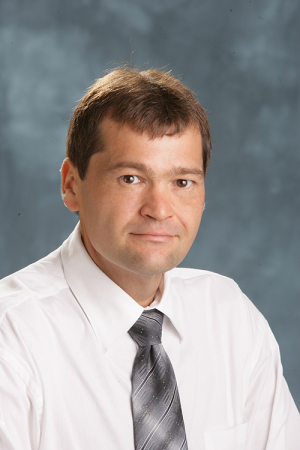Since 1955, the international society for optics and photonics, SPIE, has inducted fellows each year to recognize their significant scientific and technical contributions to optics, photonics and imaging fields as well as service to the society and to the greater scientific community.
Kirill Larin, associate professor and director of the biomedical engineering graduate program at the UH Cullen College of Engineering, was one of the 2015 SPIE Fellows added to the prestigious membership roster. Of the SPIE’s 256,000 members, just over 1,000 have been named fellows since 1955.
“Kirill Larin was selected on the basis of achievement for his contributions to biophotonics in optical imaging,” said Brent Johnson, SPIE coordinator for the fellows program.
Larin’s most recent research projects include the noninvasive functional and structural imaging of mammalian embryonic development using optical coherence tomography and the noninvasive study of tissue elasticity with optical coherence elastography.
“We are the first to be able to directly image cardiovascular system formation in live mammalian embryos with high resolution,” Larin said. “And the optical elastography is an emerging field which can assess tissue mechanical properties at depths typically exceeding the imaging depth.”
Both projects involve the development of innovative imaging processes through novel applications of light. One study involves early cardiovascular system developmental processes in mice embryos. The most prevalent type of congenital birth defect, which is also the leading cause of birth defect-related death, is abnormality in growth and development of the cardiovascular system, Larin said. The technology also allows for the assessment of the effects of alcohol and tobacco smoke on congenital diseases.
Human hearts form and begin to beat before researchers can safely use clinical ultrasound imaging to view them. Hearts in mice measure half a millimeter when they begin to beat, and Optical Coherence Tomography offers advantages of spatial resolution and sensitivity with millimeters of depth penetration, Larin said.
“Despite numerous developments in mouse genomics during the last decade that have identified genes that influence cardiovascular development and disease, better tools are needed for earlier detection of defects that lead to cardiac failure and long-term disorders,” Larin said.
Another of Larin’s research projects delves into new noninvasive ways to observe and assess biomechanical properties of tissues that comprise human organs such as hearts, brains and eyes. His goal is to develop a technique to quantitatively measure tissue elasticity, which is not ascertainable through touch.
“Previous attempts to measure tissue elasticity, compressibility and shear forces in vivo have met with limited success and little agreement,” Larin said. “Successful in vivo measurements of the biomechanical properties of different tissues could lead to significant scientific and clinical breakthroughs in our understanding of disease development and progression, and the impact of clinical treatments.”
Outside the lab, Larin has chaired three SPIE conferences each year for six years. The international events are taking place in San Francisco and Russia this year.
“It’s knowledge that attracts all of us,” Larin said of his inspiration to pursue engineering. “My research has a heavy medical focus, and most of my grants come from the National Institutes of Health.”
Larin studied physics and math in Russia before he earned his master’s degree in cell biology and biophysics as well as his doctoral degree in biomedical engineering from the University of Texas-Medical Branch. He has been a member of the faculty at the University of Houston for 10 years.
“It’s an honor to be a SPIE Fellow,” Larin said. “It enables me to participate in decision-making activities that can affect policy changes in my field.”
